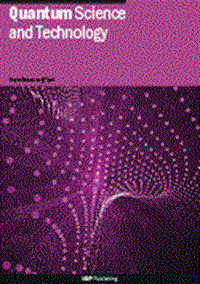Gate teleportation-assisted routing for quantum algorithms
IF 5.6
2区 物理与天体物理
Q1 PHYSICS, MULTIDISCIPLINARY
引用次数: 0
Abstract
The limited qubit connectivity of quantum processors poses a significant challenge in deploying practical algorithms and logical gates, necessitating efficient qubit mapping and routing strategies. When implementing a gate that requires additional connectivity beyond the native connectivity, the qubit state must be moved to a nearby connected qubit to execute the desired gate locally. This is typically achieved using a series of SWAP gates creating a SWAP path. However, routing methods relying on SWAP gates often lead to increased circuit depth and gate count, motivating the need for alternative approaches. This work explores the potential of teleported gates to improve qubit routing efficiency, focusing on implementation within specific hardware topologies and benchmark quantum algorithms. We propose a routing method that is assisted by gate teleportation. It establishes additional connectivity using gate teleportation paths through available unused qubits, termed auxiliary qubits, within the topology. To optimize this approach, we have developed an algorithm to identify the best gate teleportation connections, considering their potential to reduce the depth of the circuit and address possible errors that may arise from the teleportation paths. Finally, we demonstrate depth reduction with gate teleportation-assisted routing in various benchmark algorithms, including case studies on the compilation of the Deutsch–Jozsa algorithm and the quantum approximation optimization algorithm for heavy-hexagon topology used in IBM 127-qubit Eagle r3 processors. Our benchmark results show a 10%–25% depth reduction in the routing of selected algorithms compared to regular routing without using teleported gates.量子算法的门远传辅助路由选择
量子处理器有限的量子比特连通性对部署实用算法和逻辑门提出了重大挑战,需要有效的量子比特映射和路由策略。当实现需要在本地连接之外的额外连接的门时,必须将量子比特状态移动到附近连接的量子比特以在本地执行所需的门。这通常是通过创建SWAP路径的一系列SWAP门来实现的。然而,依赖于SWAP门的路由方法通常会导致电路深度和门数的增加,从而激发了对替代方法的需求。这项工作探索了隐形传送门提高量子比特路由效率的潜力,重点是在特定硬件拓扑和基准量子算法中的实现。我们提出了一种由传送门辅助的路由方法。它通过拓扑内可用的未使用量子位(称为辅助量子位)使用门传送路径建立额外的连接。为了优化这种方法,我们开发了一种算法来确定最佳的栅极隐形传态连接,考虑到它们可以减少电路的深度,并解决隐形传态路径可能产生的错误。最后,我们在各种基准算法中演示了门隐形传态辅助路由的深度减少,包括对Deutsch-Jozsa算法的编译和IBM 127量子位Eagle r3处理器中使用的重六边形拓扑的量子逼近优化算法的案例研究。我们的基准测试结果显示,与不使用传送门的常规路由相比,所选算法的路由深度减少了10%-25%。
本文章由计算机程序翻译,如有差异,请以英文原文为准。
求助全文
约1分钟内获得全文
求助全文
来源期刊

Quantum Science and Technology
Materials Science-Materials Science (miscellaneous)
CiteScore
11.20
自引率
3.00%
发文量
133
期刊介绍:
Driven by advances in technology and experimental capability, the last decade has seen the emergence of quantum technology: a new praxis for controlling the quantum world. It is now possible to engineer complex, multi-component systems that merge the once distinct fields of quantum optics and condensed matter physics.
Quantum Science and Technology is a new multidisciplinary, electronic-only journal, devoted to publishing research of the highest quality and impact covering theoretical and experimental advances in the fundamental science and application of all quantum-enabled technologies.
 求助内容:
求助内容: 应助结果提醒方式:
应助结果提醒方式:


